Explore null | Canon Latin America

EOS-1D X Mark II
- EOS-1D X Mark II Camera Body
- Battery Pack LP-E19
- Battery Charger LC-E19
- Wide Strap
- Eyecup Eg (Not Shown)
- Cable Protector
- Interface Cable IFC-150U II
- EOS Digital Solution Disk (Not Shown)
-
OVERVIEW
-
SPECIFICATIONS
-
ACCESSORIES
-
RESOURCES
-
SUPPORT
-
MISCELLANEOUS
The Mark of Legends
Immense power. Phenomenal speed. A remarkable combination of innovation and refinement. The new EOS-1D X Mark II camera is nothing but legendary every step of the way. Building on a heritage of sophisticated innovation, the EOS-1D X Mark II is blazingly fast. Up to 14 fps* (up to 16 fps* in Live View mode) can be captured at a burst rate of up to 170 RAWs with a CFast™ card, and an improved 61-point AF system helps deliver clean, sharp images quickly, even in dim light. This remarkable speed means faster recording too: 4K video can be recorded at up to 60 fps with smooth AF and strikingly clear detail. Combined with superb low-light performance thanks to its powerful sensor and expandable ISO range, the EOS-1D X Mark II performs brilliantly, swiftly and stunningly no matter when or where the photographer is shooting. From the stadium, safari or studio to virtually everywhere in between, the EOS-1D X Mark II maintains and enhances all the hallmarks of what Canon has to offer, marking a new page in the legacy of the EOS series of cameras.

































Up to 14 fps* Full-resolution RAW or JPEG, Up to 16 fps* in Live View Mode
Delivering outstanding performance at speeds of up to 14 fps*, and up to 16 fps* in Live View, the EOS-1D X Mark II camera is loaded with technologies that help facilitate speedy operation at every step of image capture. The EOS-1D X Mark II features a new mirror mechanism designed for highly precise operation with reduced vibration even at incredibly fast speeds. The shutter unit is rated for 400,000 frames and captures at up to 16 fps*, while the CMOS sensor has high-speed signal reading that enables speedy image capture. A fast AF/AE system, Dual DIGIC 6+ Image Processors and high-speed recording with its new CFast™ card slot helps ensure that camera operations are performed quickly and precisely.
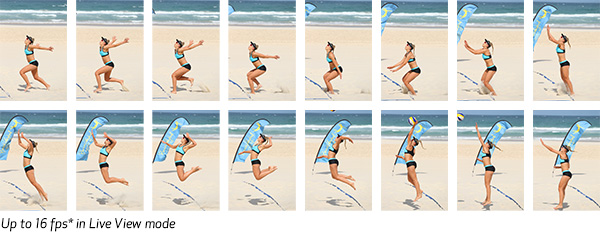
Dual DIGIC 6+ Image Processors
Key to the performance benchmarks achieved by the EOS-1D X Mark II camera, Dual DIGIC 6+ Image Processors not only convert the light that passes through the camera's sensor into high-quality photos and movies, but also enhance the camera's overall performance. Improvements include high-speed processing, up to 16-fps* operation for stills and 4K/60p movies, lens distortion and diffraction correction during operation with virtually no effect on the camera's speed, plus fast write times and much more.

* Continuous shooting speed may vary based on the aperture and lens being used and conditions of the subject.
The EOS-1D X Mark II camera can capture an incredible amount of images and movies with amazing speed. When recording to CFast 2.0™** cards through its new CFast™ card slot, the EOS-1D X Mark II can record up to 170 full-size RAW files, and JPEGs up to full card capacity at 16 fps. 4K/60p and Full HD/120p video can also be recorded with virtually no restriction, and with exFAT format support, movie files of larger than 4GB can be recorded without the need to merge files. Performance with CF cards through the camera's CF card slot is impressive as well: the EOS-1D X Mark II can capture up to 73 full-size RAW files and JPEGs up to full card capacity when recording to CF UDMA7 media.

As of February 2016, compatibility has been verified for the following CFast™ memory cards:

Proper operation cannot be guaranteed for all recording media. Long-term usage may reduce a CFast™ card's write speed. We recommend users regularly fully format and refresh their card using the “Full Format and Refresh Tool.”
* Canon is an authorized licensee of the CFast 2.0™ trademark, which may be registered in various jurisdictions.
20.2 Megapixel Full-Frame CMOS Sensor
The EOS-1D X Mark II camera features a Canon-developed 20.2 Megapixel full-frame CMOS sensor that not only helps it record more pixels, but also includes gapless micro lenses for enhanced low-light performance. This results in noise reduction in dark portions of the image even at high ISO speeds, and increased sensitivity that contributes to the EOS-1D X Mark II's high-speed image capture rate, accelerating frame-to-frame performance as well as enabling 4K movies (60p/30p) and improved playback. The new sensor is also Canon's first full-frame sensor to include Dual Pixel CMOS AF for high-speed, precise AF during Live View still and movie recording.
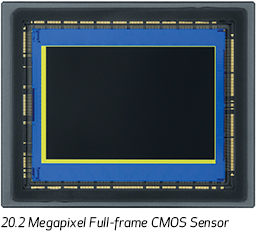
ISO Range of 10051200; Expansion to ISO 409600
The EOS-1D X Mark II camera delivers high standard and expanded ISOs, and a score of options to enhance shooting in varied and fast-changing lighting situations. With a standard range of ISO 10051200, the EOS-1D X Mark II is incredibly sensitive, and thanks to a high signal-to-noise ratio as well as powerful noise reduction, the EOS-1D X Mark II can shoot at expanded sensitivities down to ISO 50 (L) and up to 102400 (H1), 204800 (H2) and even 409600 (H3)! Beyond the obvious advantages of its wide ISO range, the EOS-1D X Mark II has automatic ISO settings, found on the dedicated ISO menu. Minimum and maximum ISO settings can be specified, as can a user-defined range, plus full auto and manual.

Improved AF Performance
The EOS-1D X Mark II camera incorporates a number of significant improvements to help deliver highly precise, reliable AF and AF tracking, both faster and available in more situations. It features a new 61-point High Density Reticular AF II system with 41 cross-type points that expands the AF area approximately 8.6% in the top and bottom of the central AF area, and approximately 24% at the top and bottom of the peripheral frame. A wider subject tracking area improves the AF system so that challenging focus tracking in scenes with sudden changes of speed and subject position is easier than ever. The AF system's low-intensity limit has been improved to EV -3 and all 61 AF points are compatible down to f/8* for excellent low-light performance. The EOS-1D X Mark II's AF algorithm has also been improved: it's equipped with AI Servo AF III+, which remembers the AF path and helps refine precision. Whether choosing individual AF points manually, using the Large Zone AF area or any of the camera's automatic AF selection modes, the EOS-1D X Mark II is designed to exceed users' expectations for high-precision AF.
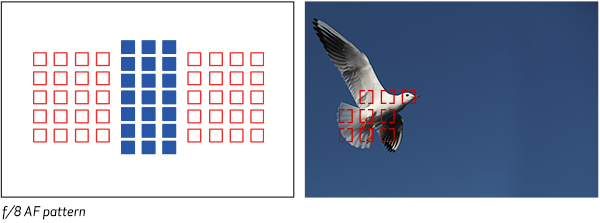
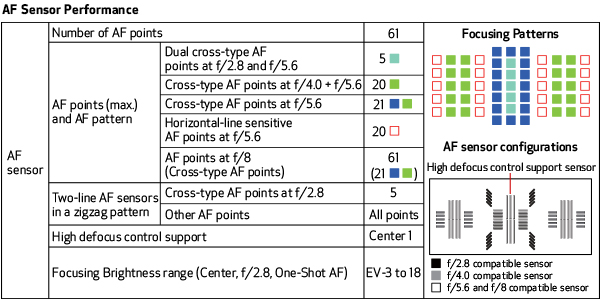
Improved Intelligent Viewfinder with Enhanced Visibility for AF Point Display
The EOS-1D X Mark II camera features a new Intelligent Viewfinder II for convenient composition and setting changes without taking an eye off the subject at hand. The camera's viewfinder can show significantly more information in the LCD display and presents AF points in red, increasing visibility in dark locations where AF is typically difficult and in situations where the ambient light makes the AF frame difficult to see. Features like the electronic level, a grid, flicker detection, white balance, metering mode, AF information and more can be glanced at easily without drawing attention away from the subject.
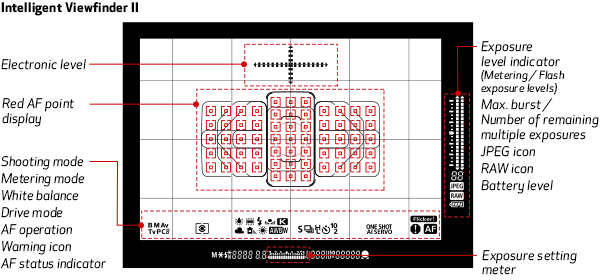
* Except when using the Canon EF 50mm f/2.5 Macro, EF 100mm f/2.8 Macro, EF 100mm f/2.8 Macro USM, EF 100mm f/2.8L Macro IS USM and EF 28-80mm f/2.8-4L USM lenses.
The EOS-1D X Mark II camera has an amazingly advanced 360,000-pixel RGB+IR metering sensor and processor that greatly contribute to the camera's impressive AF performance for both stills and video. Thanks to a high resolution and infrared sensitivity combined with a refined detection algorithm, this new sensor improves the color and shape recognition of the EOS-1D X Mark II's iSA (Intelligent Subject Analysis) system, increasing the camera's ability to recognize subjects for faster, more precise AF, metering and exposure compensation. This additional exposure and subject information also helps the EOS-1D X Mark II's iTR (Intelligent Tracking and Recognition) AF system maintain focus on a moving subject with a greater level of consistency.
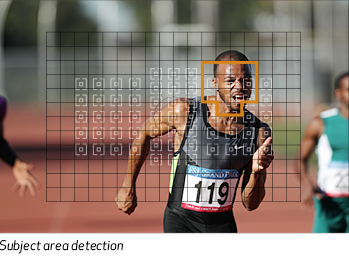
The EOS-1D X Mark II is an incredibly capable camera for moviemaking. Thanks to its Dual DIGIC 6+ Image Processors and its advanced sensor, it can capture huge 4K (Motion JPEG) video at up to 60 fps, recording smoothly to CFast™ cards. It's the first EOS camera able to record Full HD video at 120 fps, easily displaying minute details imperceptible to the human eye and ideal for slow-motion video capture. With the camera's new touch panel display, AF points can be easily selected while the camera's rolling, and focus can be quickly confirmed with the EOS-1D X Mark II's 4K still frame grab feature*, wherein an 8.8-Megapixel still image can be selected for review and saved. Low-light performance is improved as well, with video recording at ISOs of up to 12800 in 4K and 25600 in Full HD. The EOS-1D X Mark II also features uncompressed HDMI output for Full HD videos, helping to facilitate video editing with minimal image degradation. Not to mention, it can also save videos as MP4s for easy playback on mobile devices.
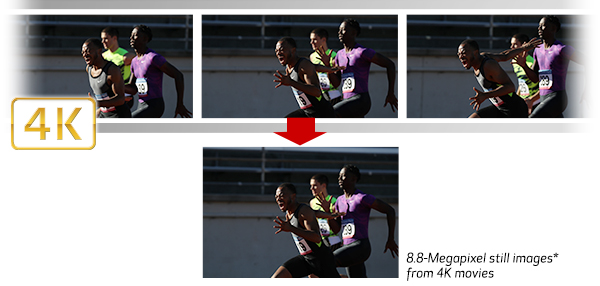
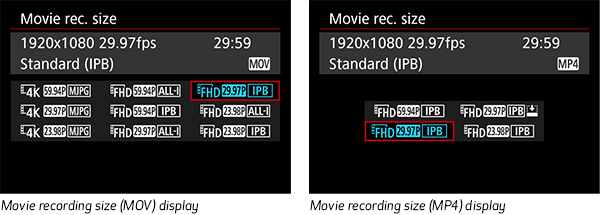
* Saving a still image from a single movie frame does not result in the same image quality as a normal still image.
With significant improvements in AF operation, the EOS-1D X Mark II camera can be an indispensible and remarkably portable moviemaking tool. Continuous AF, even during 4K recording, is made easy thanks to the EOS-1D X Mark II's Dual Pixel CMOS AF, which is compatible with all Canon EF lenses. Focus points can be selected automatically, or specified on the camera's new touch panel LCD screen. Critical focus throughout the frame can be easily confirmed by enlarging stills grabbed from video recordings. The EOS-1D X Mark II's Movie Servo AF is compatible with all frame rates and resolutions, and can be customized to set tracking sensitivity, AF speed and even Face Tracking priority. These advanced features help make the EOS-1D X Mark II a truly versatile and convenient camera for 4K and Full HD moviemaking.
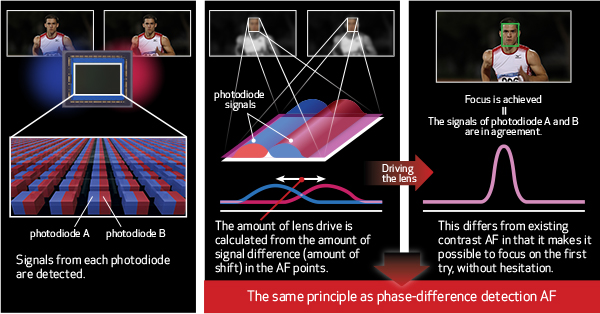
The EOS-1D X Mark II camera's 3.2-inch touch panel TFT LCD monitor has approximately 1.62 million dots, anti-reflective construction and features Canon's Clear View LCD II technology for bright, sharp display in any number of shooting situations. Its new touchscreen function allows AF point switching and image magnification during Live View shooting and movie shooting, providing convenient operation. The LCD monitor can be ideal for reviewing settings and images, as well as for shooting in Live View mode. In Live View, grid lines can be displayed in 9 sections, 24 sections or 9 sections with diagonals, as well as the dual-axis electronic level, which helps ensure accurate level by displaying both roll and pitch in 1-degree increments. For image review, the EOS-1D X Mark II has a dedicated Magnify/Reduce button. While pressing the button, zooming in or out (up to 10x) is achieved simply by turning the Main Dial. Images can be protected or erased quickly, individually or in batches, and slideshows can be created with some or all images and can be sequenced by date, folders, movies, stills, protection or rating. A feature guide can be accessed for the selected menu, providing detailed reference information when needed.

To combat any possible image degradation from lens aberration and diffraction, the EOS-1D X Mark II camera is equipped with a number of in-camera optical correction functions for clear and high-quality images. The EOS-1D X Mark II even stores lens aberration data, helping to eliminate the need to register lens data on previously released lenses, and correcting images with virtually no delay in-camera. The EOS-1D X Mark II not only corrects peripheral brightness and chromatic aberration, but also features distortion correction plus diffraction correction, which has been included for the first time in an EOS camera. Distortion correction helps resolve barrel and pincushion distortions, while diffraction correction virtually eliminates the blurring effects from diffraction that can be created when capturing an image at a small aperture. The camera's Dual DIGIC 6+ Image Processors help ensure these corrections can be made with virtually no effect on operational speed. In-camera RAW processing is also made fast and convenient with Canon's Digital Lens Optimizer, helping to improve image quality and giving photographers the ability to work confidently in more complex environments.
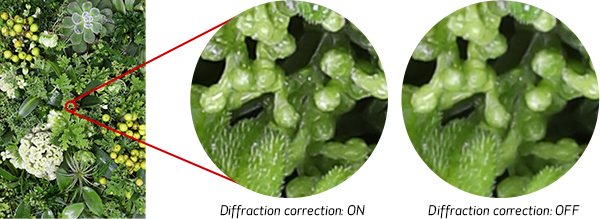
Providing crucial location and time data, GPS has become an indispensible aspect of the professional workflow, especially for professionals who work on location and capture thousands of images each day. The EOS-1D X Mark II camera has GPS* built in, helping photographers and filmmakers not only tag their images with critical location data, but also adjust the time and timestamp on the camera automatically. Thanks to built-in GPS*, and Wi-Fi® connectivity through the optional Wireless File Transmitter WFT-E8A accessory, the EOS-1D X Mark II can use both GPS and WFT (Wireless File Transfer) together, making it easy to upload a great amount of images both quickly and from increasingly far-flung locales. Offering compatibility with American GPS satellites, Russian GLONASS satellites and Japanese quasi-zenith satellites Michibiki, the EOS-1D X Mark II's GPS information is reliably accurate virtually anywhere you go.
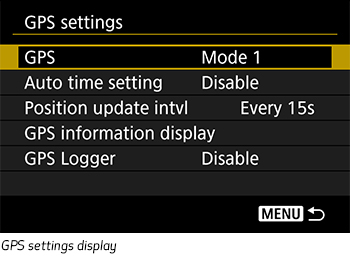
* In certain countries and regions, the use of GPS may be restricted. Therefore be sure to use GPS in accordance with the laws and regulations of your country or region. Be particularly careful when traveling outside your home country. As a signal is received from GPS satellites, take sufficient measures when using in locations where the use of electronics is regulated.
The Wireless File Transmitter WFT-E8A, the EOS-1D X Mark II camera's new optional accessory, provides both a fast throughput for image uploading and several new features that make dynamic wireless photography simple and fast. It has 5 GHz 802.11ac support for high-speed image transfer, a revamped user interface that enables speedy set-up and configuration of wireless networks and even compatible smartphone connection. Accommodating both iOS* and Android** devices, the Wireless File Transmitter WFT-E8A makes it simple to use a smartphone as a remote control for still and video capture. It can even transfer recorded images back for viewing on the device's screen. The Wireless File Transmitter WFT-E8A is both compact and durable, with excellent dust- and water- resistance for unfettered operation in difficult environments.

* Compatible with iOS versions 7.1/8.4/9.0, Android smartphone and tablet versions 4.0/4.1/4.2/4.3/4.4/5.0/5.1. Data charges may apply with the download of the free Canon Camera Connect app. This app helps enable you to upload images to social media services. Please note that image files may contain personally identifiable information that may implicate privacy laws. Canon disclaims and has no responsibility for your use of such images. Canon does not obtain, collect or use such images or any information included in such images through this app.
** Compatible with Android smartphone and tablet versions 4.0/4.1/4.2/4.3/4.4/5.0/5.1.
For professionals who demand nothing less than the best, the EOS-1D X Mark II camera is designed to perform superbly even in the most treacherous environments, every time. The body is constructed of rigid, high-strength magnesium alloy for rugged performance and features a grip design for easy finger placement and reduced hand fatigue. Its shutter has lightweight, carbon-fiber blades, and is rated to maintain up to 16 fps performance without compromise, for up to 400,000 cycles. The EOS-1D X Mark II and accessories like the new Wireless File Transmitter WFT-E8A have extensive gasketing for improved dust and water resistance, even at their connection points.
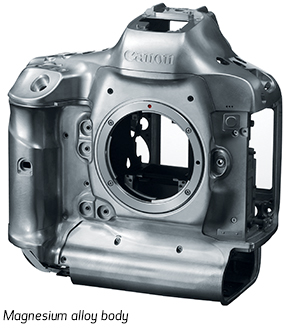
* Continuous shooting speed may vary depending on the shutter speed, the aperture, the lens being used, the battery charge and various camera settings.
| Type | Digital, AF/AE Single-Lens Reflex Camera |
| Recording Medium | CF Card (Type I; Compatible With UDMA 7 CF Cards) And CFast™ Card (CFast 2.0™ Supported) |
| Image Format | Approx. 36 Mm X 24mm (35 Mm Full-Frame) |
| Compatible Lenses | Canon EF Lenses (Excluding EF-S And EF-M Lenses) |
| Lens Mount | Canon EF Mount |
| Type | High-Sensitivity, High-Resolution, Large Single-Plate Full-Frame CMOS Sensor |
| Pixels | Approx. 20.2 Megapixels |
| Total Pixels | Approx. 21.5 Megapixels |
| Aspect Ratio | 3:2 (Horizontal: Vertical) |
| Color Filter System | RGB Primary Color Filters |
| Low Pass Filter | Fixed Position In Front Of The Image Sensor |
| Dust Deletion Feature | (1) Self Cleaning Sensor Unit
|
| Recording Format | Design Rule For Camera File System 2.0 And EXIF 2.3 |
| Image Format | Still Image: JPEG, RAW (14 Bit Canon Original), M-RAW, S-RAW, RAW+JPEG, M-RAW+JPEG, S-RAW+JPEG Video: MOV (4K Movie: Motion JPEG, Full HD Movie: MPEG4 AVC/H.264*; Audio: Linear PCM), MP4 (Movie: MPEG4 AVC/H.264*; Audio: AAC) * Variable (Averaged) Bit Rate |
| File Size |
|
| Recording Functions |
|
| Backup Recording | N/A |
| File Numbering | The Following Three Types Of File Numbers Can Be Set:
|
| Raw Jpeg Simultaneous Recording | One Of Three Types Of RAW Images And One Of Four Types Of JPEG Images Can Be Recorded Together. |
| Color Space | SRGB, Adobe RGB |
| Picture Style | Auto, Standard, Portrait, Landscape, Fine Detail, Neutral, Faithful, Monochrome, User Defined 1-3* * [Standard] Is The Default Setting For [User Def. 1-3] |
| Settings | Auto (Ambience Priority/White Priority), Daylight, Shade, Cloudy*1, Tungsten Light, White Fluorescent Light, Flash, Custom (Custom WB) 1-5*2, Color Temperature, PC-1-5*3 (Personal WB) *1. Also Effective In Twilight And Sunset. *2. [Select Image On Card], [Record And Register WB] And [Edit WB Name] Can Be Used. *3. Up To Five White Balance Data Settings Set With EOS Utility. |
| Auto White Balance | Option Between Ambience Priority And White Priority Settings |
| Color Temperature Compensation | Blue/Amber Bias: ±9 Levels Magenta/Green Bias: ±9 Levels *Corrected In Reference To The Current WB Mode's Color Temperature. |
| Color Temperature Information Transmission | Provided |
| Type | Eye-Level Pentaprism |
| Coverage | Approx. 100% Vertically And Horizontally |
| Magnification | Approx. 0.76x (-1m-1 With 50mm Lens At Infinity) / 35.1° Angle Of View |
| Eyepoint | Approx. 20mm (At -1m-1 From Eyepiece Lens Center) |
| Dioptric Adjustment Correction | -3.0 To +1.0 M-1 (Diopter) |
| Focusing Screen | Ec-C6 Provided, Can Be Changed To Ec-A, B Or L |
| Mirror | Quick-Return Half Mirror |
| Viewfinder Information |
|
| Depth Of Field Preview | Provided |
| Type | TTL Secondary Image-Forming Phase-Difference Detection System With AF-Dedicated CMOS Sensor | ||||||||||||
| Af Points | Max. 61 Points (Cross-Type AF Points: Max. 41 Points)
The Number Of AF Points, Cross-Type AF Points And Dual Cross-Type AF Points Vary Depending On The Lens Used. |
||||||||||||
| Focusing Modes |
|
||||||||||||
| Af Point Selection |
|
||||||||||||
| Af Function Registration Switching | Customizable With Custom Controls | ||||||||||||
| Selected Af Point Display | Superimposed Display | ||||||||||||
| Active Af Point Indicator |
|
||||||||||||
| Af Assist Beam | When An External EOS-Dedicated Speedlite Is Attached To The Camera, The Following Options Are Available:
|
| Metering Modes | 216-Zone (18 X 12) Metering With Approx. 360,000-Pixel RGB+IR Metering Sensor. The Following Metering Modes Selectable:
|
||||||||||||||
| Metering Range | EV 0-20 (At 73°F/23°C, ISO 100, With Evaluative Metering) | ||||||||||||||
| Exposure Control Systems |
|
||||||||||||||
| Iso Speed Range | Manual Settings
For [Highlight Tone Priority], The Settable ISO Speed Range Will Be ISO 200–51200. Auto Settings
*1 It Depends On [Minimum] And [Maximum] Of [Auto Range]. *2. If Overexposure Will Result With Fill Flash, The Minimum ISO Speed Will Be Set To ISO 100 (Except In The M And Bulb Modes). *3. In The P Mode, Using Bounce Flash With An External Speedlite Will Have The ISO Speed Set Automatically Within ISO 400–1600 To Suit The Brightness. |
||||||||||||||
| Exposure Compensation | Manual: ±5 Stops In 1/3- Or 1/2-Stop Increments AEB: ±3 Stops In 1/3- Or 1/2-Stop Increments * Indicated Up To ±3 Stops On The LCD Panel And In The Viewfinder. |
||||||||||||||
| Ae Lock |
|
||||||||||||||
| Type | Vertical-Travel, Mechanical, Focal-Plane Shutter With All Speeds Electronically-Controlled |
| Shutter Speeds | 1/8000 To 30 Sec., Bulb (Total Shutter Speed Range. Available Range Varies By Shooting Mode.) X-Sync At 1/250 Sec.
|
| Shutter Release | Soft-Touch Electromagnetic Release |
| Self Timer | 10-Sec. Delay, 2-Sec. Delay |
| Flash Exposure Compensation | ±3 Stops In 1/3- Or 1/2-Stop Increments |
| Eos External Flash Or Dedicated Speedlites | E-TTL II Autoflash With All EX Series Speedlites |
| Zooming To Match Focal Length | Provided |
| Flash Metering | E-TTL II Autoflash |
| Flash Exposure Compensation | ±3 Stops In 1/3- Or 1/2-Stop Increments |
| Fe Lock | Provided |
| External Flash Settings |
|
| Pc Terminal | Provided * No Polarity. * Sync Speed: Since The Flash Duration Of Studio Flash Units Vary, Set A Sync Speed Within 1/125 Sec. To 1/30 Sec. And Check If The Flash Sync Works. * Both The Accessory Shoe (X-Sync Contact With Maximum Sync Speed Of 1/250 Sec.) And The PC Terminal Can Be Used Simultaneously For Simultaneous Flash Firing. |
| Drive Modes |
|
|||||||||||||||||||
| Continuous Shooting Speed |
|
|||||||||||||||||||
| Max Burst During Continuous Shooting | The Maximum Burst During Continuous Shooting Is As Follows:
With "Full", Continuous Shooting Is Possible Until The Card Becomes Full. |
|||||||||||||||||||
| Shooting Modes | Still Photo And Video Recording |
| Focusing |
|
| Metering Modes |
|
| Metering Range | EV 0–20 (At 73°F/23°C, ISO 100, With Evaluative Metering) |
| Grid Display |
|
| Exposure Simulation | Same As With Viewfinder Shooting |
| Silent Shooting | Provided |
| File Format | MOV (4K Movie: Motion JPEG, Full HD Movie: MPEG4 AVC/H.264; Audio: Linear PCM), MP4 (Movie: MPEG4 AVC/H.264; Audio: AAC) Internal Monaural Microphone External Stereo Microphone Jack Available |
|||||||||||||||||||||||||||||||||||||||||||||||||||||||||||||||||||||||||||||||||
| File Size | 4096 X 2160 (4K) 1920 X 1080 (Full HD) |
|||||||||||||||||||||||||||||||||||||||||||||||||||||||||||||||||||||||||||||||||
| Frame Rates | [4096 X 2160]: 59.94fps / 50.00fps / 29.97 Fps/ 25.00fps / 24.00fps / 23.98fps [1920 X 1080]: 119.9fps / 100.0fps / 59.94fps / 50.00fps / 29.97fps / 25.00fps / 24.00fps / 23.98fps |
|||||||||||||||||||||||||||||||||||||||||||||||||||||||||||||||||||||||||||||||||
| Continuous Shooting Time | MOV Format
MP4 Format
|
|||||||||||||||||||||||||||||||||||||||||||||||||||||||||||||||||||||||||||||||||
| Focusing |
|
|||||||||||||||||||||||||||||||||||||||||||||||||||||||||||||||||||||||||||||||||
| Exposure Control |
|
|||||||||||||||||||||||||||||||||||||||||||||||||||||||||||||||||||||||||||||||||
| Exposure Compensation | Up To ±3 Stops In 1/3- Or 1/2-Stop Increments * If AE Microadjustment Is Performed, The Settable Exposure Compensation Amount Will Decrease By The Amount Of The AE Microadjustment. For Example, If You Set The AE Microadjustment To +1 Stop, The Exposure Compensation Amount Will Be Limited To A Maximum +2 Stops On The Positive Side. |
|||||||||||||||||||||||||||||||||||||||||||||||||||||||||||||||||||||||||||||||||
| Type | TFT Color, Liquid-Crystal Monitor |
| Screen Monitor Size | 3.2-Inches |
| Pixels | Approx. 1.62 Million Dots |
| Coverage | Approx. 100% Vertically And Horizontally Viewing Angle: Approx. 170° Vertically And Horizontally |
| Brightness Control | 7 Levels Provided |
| Interface Languages | 25 (English, German, French, Dutch, Danish, Portuguese, Finnish, Italian, Norwegian, Swedish, Spanish, Greek, Russian, Polish, Czech, Hungarian, Romanian, Ukraine, Turkish, Arabic, Thai, Simplified/Traditional Chinese, Korean, Japanese) |
| Image Display Format |
|
||||
| Highlight Alert | On The Single-Image Display, Highlight Areas Without Any Image Information Will Blink. |
| Protection | Erase Protection Can Be Applied Or Canceled For A Single Image, All Images In A Folder Or All Images In The Card. |
| Erase | Erase A Single Image, Selected Images, All Images In A Folder, All Images In A Card Or Erase Only Unprotected Images. |
| Compatible Printers | N/A (Direct Printing Not Possible) |
| Dpof | Version 1.1 Compatible |
| Compatible Images | JPEG Images, RAW Images And Movies RAW+JPEG Images Can Be Transferred JPEG Only, RAW Only Or RAW+JPEG. If JPEG Or RAW Images Are Appended With A Voice Memo, The Voice Memo File Will Also Be Transferred. |
| Custom Functions | Total 34 |
| Camera User Settings | Current Camera Settings Can Be Registered To C1, C2 And C3 On The Mode Dial. Automatic Updating Of The Registered Settings Can Be Set To Enable Or Diable. |
| My Menu Registration | Up To Six Top-Tier Menu Options And Custom Function Settings Can Be Registered. Up To Five My Menu Tabs Can Be Added. |
| Usb Terminal | SuperSpeed USB (USB 3.0)
|
| Video Out Terminal | AV/OUT Terminal Not Provided. HDMI Mini OUT Terminal Is Type C (Resolution Switches Automatically) / CEC Compatible.
|
| Extension System Terminal | For Connection To WFT-E8A And WFT-E6A |
| Battery | Battery Pack LP-E19 (Or LP-E4N, LP-E4) X1
|
|||||||||||||||
| Number Of Shots | Approx. (Based On CIPA Testing Standards)
|
|||||||||||||||
| Battery Check | Automatic Battery Check When The Power Switch Is Turned ON. | |||||||||||||||
| Power Saving | Power Turns Off After The Set Time (1, 2, 4, 8, 15 Or 30 Min.) Of Non-Operation Elapses. | |||||||||||||||
| Date Time Battery | Built-In Secondary Battery When Fully Charged, The Date/Time Can Be Maintained For Approx. One Month.
|
|||||||||||||||
| Start Up Time | Approx. 0.1 Sec. (Based On CIPA Testing Standards) * Excluding The Recognition Time For Genuineness (Genuine Canon Battery) At The Installation Of The Battery. * Start-Up Time Becomes Longer With A Battery Being Used For The First Time With The Very Camera. |
| Dimensions W X H X D | Approx. 6.22 X 6.60 X 3.25 In. / 158.0 X 167.6 X 82.6mm |
| Weight | Approx. 53.97 Oz. / 1530g (Based On CIPA Guidelines) Approx. 47.27 Oz. / 1340g (Body Only, Without Battery, Cards, Body Cap Or Eyecup) |
| Operating Temperature Range | 32-113°F/0-45°C |
| Operating Humidity Range | 85% Or Less |
* Continuous shooting speed may vary depending on the shutter speed, the aperture, the lens being used, the battery charge and various camera settings.

Wireless File Transmitter WFT-E8A
The Wireless File Transmitter WFT-E8A adds impressive wireless operation and speedy image transfer to the EOS-1D X Mark II camera.

Adapter AC-E19
AC Adapter for your Digital SLR Camera is used with the DR-E19 DC Coupler to provide a constant power supply.

Battery Charger LC-E19
Two battery packs can be attached. It takes about 170 minutes to charge one LP-E19 battery pack (140 minutes for LP-E4 or LP-E4N). It plugs directly into AC outlets. Not compatible with the Car Battery Cable CB-570.

DC Coupler DR-E19
When shooting indoors, in a studio or on a tabletop, use this DC coupler to provide uninterrupted power to your Digital SLR.Used with the general purpose AC adapter AC-E19, it provides a constant power supply.
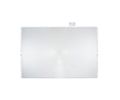
Focusing Screen EC-C6
The Ec-C6 focusing screen is the Standard Precision Matte screen that comes bundled with the EOS-1D X Mark II. The finer microlens structure provides optimum focusing for various scenes.
- Windows Server 2025
- macOS 15
- macOS 14
- macOS 13
- Windows 11
- macOS 12
- Windows Server 2022
- macOS 11
- Linux MIPS
- Linux ARM
- macOS 11.0
- macOS 10.15
- macOS v10.13
- macOS v10.14
- Windows Server 2019 (x64)
- macOS v10.14
- macOS v10.13
- Windows Server 2016 (x64)
- macOS v10.12
- Linux 64bit
- Linux 32bit
- OS X v10.11
- Windows 10
- Windows 10 (x64)
- OS X v10.10
- Windows Server 2012 R2 (x64)
- OS X v10.9
- Windows 8.1 (x64)
- Windows 8.1
- Windows Server 2012 (x64)
- Windows 8
- Windows 8 (x64)
- Windows 7
- Windows 7 (x64)
- Windows Vista
- Windows Vista (x64)
- Windows XP
- Windows XP (x64)
- Windows Server 2008
- Windows Server 2008 (x64)
- Windows Server 2008 R2 (x64)
- Windows Server 2003
- Windows Server 2003 (x64)
- Windows Server 2003 R2
- Windows Server 2003 R2 (x64)
- Windows 2000
- Windows NT
- Windows 3.1
- Windows Me
- Windows 98
- Windows 95
- Mac OS X v10.8
- Mac OS X v10.7
- Mac OS X v10.6
- Mac OS X v10.5
- Mac OS X v10.4
- Mac OS X v10.3
- Mac OS X v10.2
- Mac OS X v10.1
- Mac OS X
- Mac OS 9
- Mac OS 8
- Linux (x64)
- Linux (x32)
- Linux
- Not Applicable
Locating and Installing Your Download Cómo Localizar e Instalar su Descarga Localizando e Instalando seu Download
How to identify your OS version
To help determine which Windows operating system is running on your computer, please view the below steps:
Windows 11
Click on the Windows button (located left to the Search at the bottom).
Click on the Settings button to navigate to the system settings.
Scroll to the bottom of the page and click on the About button.
You will be able to find your Windows operating system under the Windows Specifications section.
Windows® 10
Click Start or click the Windows button (usually found in the lower-left corner of your screen).
Click Settings.
Click About (which is usually located within the lower left of the screen). The next screen should display the Windows version.
Windows 8 or Windows 8.1
Option1: Swipe in from the upper-right corner of the screen while viewing the desktop in order to open the menu, then select Settings.
Select PC Info. Under Windows edition, the Windows version is shown.
Option 2: From the Start Screen
While on the Start screen, type computer.
Right-click on the computer icon. If using touch, press and hold on the computer icon.
Click or tap Properties. Under Windows edition, the Windows version is shown.
Windows 7
Click Start or click the Windows button (usually found in the lower-left corner of your screen).
Right-click Computer and select Properties from the menu. The resulting screen should now display the Windows version.
Linux
To check the version of your Linux operating system (OS), you can use the following commands in your terminal:
1. uname -r: Displays your Linux kernel version.
2. cat /etc/os-release: Displays your distribution name and version.
3. lsb_release -a: Displays specific details about your Linux distribution and version.
4. You can also use the hostnamectl command to display the Linux kernel version. However, this command is only available on Linux distributions that use systemd by default.
To help determine which Mac operating system is running on your computer, select the Apple menu in the upper-left corner of your screen and choose About This Mac.
Upon selecting, you should see the macOS name followed by the version number.
Canon U.S.A Inc. All Rights Reserved. Reproduction in whole or part without permission is prohibited.